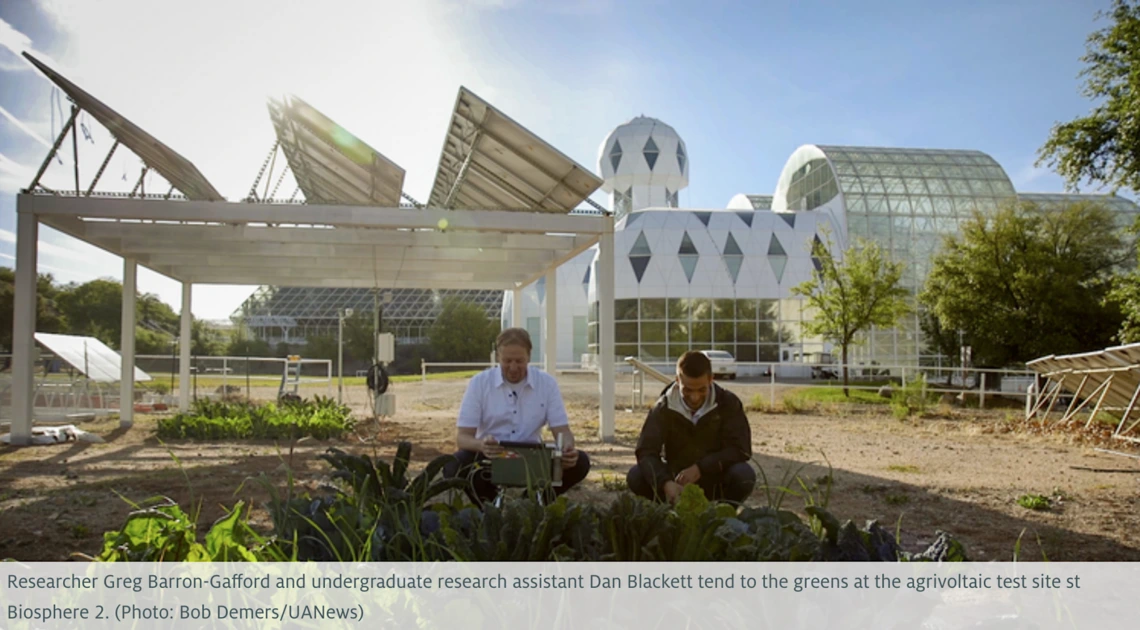
When
Where
Speaker(s)
Food, energy, and water systems, especially in drylands, are vulnerable to projected changes in climate – primarily changes in the timing and amount of precipitation and rising air temperatures. For the most part, we grow non-dryland adapted food within a dryland climate through a reliance on irrigation, and the water resource requirements are large and increasing. At the same time, renewable energy in drylands is vulnerable to the same warming trends that threaten food systems. The abundance of sunlight in the southwest US constitutes a significant solar energy resource. We have been studying the novel solution of co-locating agriculture and photovoltaics – agrivoltaics – as an untapped opportunity to simultaneously increase food and energy production while reducing water use.
Greg Barron-Gafford began his faculty career as an ecologist, graduating from the EEB program here at UA. Being broadly trained in plant and ecosystem science, his worldview grew as he managed experiments in and around Biosphere 2 and across the Southwest. Upon joining the faculty of the School of Geography & Development, his passions for physical science, environmental and social justice, and using research to solve real-world problems finally truly merged.

